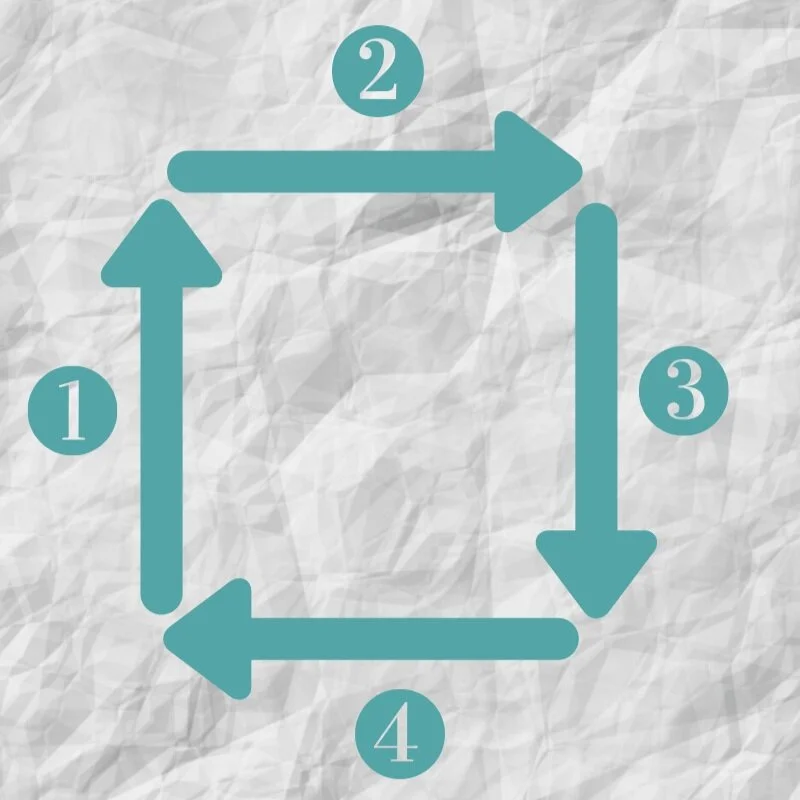In therapy as in life, there’s no such thing as a quick fix. Helping a child work through anxiety or trauma is a gradual process, and a child often needs lots of time to grow, learn new ways of thinking about things, and make sense of experiences. When working with kids, it helps to be patient.
But what about the times when patience isn’t going to cut it? What if your child is in the middle of a panic attack, and you need help right now? Or you’ve only recently started therapy, nut there’s an event looming in the near future that you know is likely to trigger anxiety? These situations are what coping skills are made for. Read on to learn 3 easy coping skills for kids with anxiety that can be used any time, anywhere.
What’s a Coping Skill, Exactly?
“Coping skill” is a broad term for any healthy habit or activity a person uses to manage strong feelings. They turn down the volume on anxious thoughts, so a child can carry on with her day. They are used deliberately when a person is feeling anxious, stressed, or angry as a way to cool off their feelings, so the person can think more clearly or get through a difficult situation. Coping skills can also be an alternative to unhealthy or even harmful behavior that some people resort to when feeling overwhelmed.
Meditation, mindfulness, physical activity, and creative arts activities all fall under the umbrella of coping skills kids with anxiety or other mental health concerns might use to manage their emotions. Lots of coping strategies help kids to focus on their breath or objects around them to help them take their attention off their anxious feelings, and focus them on something else.
Teaching a child coping skills won’t address the underlying cause of anxiety or trauma symptoms. However, helping a child learn to relax, self-soothe, and focus their attention elsewhere is a critical skill. . Over time, coping skills can build resilience and keep kids from having strong reactions when they feel stressed.
Why Do Kids with Anxiety Need Coping Skills?
When a child is very anxious, her brain and body are in fight-or-flight mode. Fight-or-flight is a natural response that is hardwired in all of us to help keep us safe from danger, giving us a big surge of adrenaline and other hormones that quickly get us ready to fight off an attacker or run for our lives. Fight-or-flight affects many systems in the body, including heart rate, sweating, breath, and digestion.
An anxious kid’s fight-or-flight response isn’t working quite the way it should. It’s going off at the wrong times, putting him in this physically uncomfortable state when he doesn’t need to be there. While coping skills can’t change the circumstances making a child anxious, they can help to change the fight-or-flight response.
Coping skills help anxious children to relax in both the short- and long-term. They help the child to calm down right away, lessening the anxiety and panic so that the child can decide how to handle a situation. They can also help in the long run: the more a child practices a coping skill, the more effective it becomes. Some children with anxiety find that when they practice coping skills regularly, their fight-or-flight response becomes less sensitive.
How Coping Skills Work for Anxious Children
Coping skills can work in a few ways:
They can help kids to relax: coping skills are a great way for kids with anxiety to calm their fight-or-flight response.
They buy kids time: they give children an opportunity to pause and consider all their options before making a decision.
They shift a child’s focus: coping skills often help a child put his attention on something outside of himself, which can help to reduce worries.
Coping Skill for Anxiety #1: Breathing in a Box
Breathing in a box is a simple way to teach children how to breathe slowly and mindfully. Draw a square on a piece of paper, and have your child trace their finger around the shape.
As your child moves his finger up one side of the square, he can breathe in on a count of 4. Next, hold the breath for a count of four as his finger moves along the top of the square. As his finger moves down the side, breathe out on a count of 4. Finally, rest for a count of 4 as his finger moves along the bottom of the box, before starting the breath cycle again.
The full cycle would look like this: Breathe in 1-2-3-4, Hold 1-2-3-4, Breathe out 1-2-3-4, Rest 1-2-3-4.
Coping Skill for Anxiety #2: Squeeze and Relax
Progressive Muscle Relaxation, or “squeeze and relax”, is a popular coping skill used to help kids struggling with anxiety, trauma, and insomnia. When a child is anxious or afraid, the muscles of the body tense up, which can lead to headaches, stomach aches, and other bodily symptoms of stress. Squeezing and releasing each muscle group in a sequence sends a message to the brain and body that it’s safe to relax right now.
To practice this, your child can start by squeezing the hands tightly (but not painfully) for a few seconds, and then relaxing. With just one squeeze there should be a noticeable difference in how the hands feel. Try the squeeze again, and then move to other muscle groups, like the arms, shoulders, stomach, and legs. Start at the top of the body and move down to the feet, before ending with one big, full-body squeeze.
Coping Skill for Anxiety #3: 5-4-3-2-1
This simple tool is particularly good for combating panic attacks as well as trauma symptoms like flashbacks. Grounding skills like this one pull a child’s focus away from the worries in her head and back to the world around her. Here’s how to try this coping skill:
Name 5 things you can see in the room or place around you
Name 4 things you can touch around you
Name 3 things you can hear (you may need to really pay attention)
Name 2 things you can smell: if you can’t smell anything after really trying, name your favorite smells
Name 1 thing you can taste: if you can’t taste anything, imagine what the last thing you ate tasted like
This quick skill can be used almost anywhere, since all it requires is use of the 5 senses.
More Coping Skills Resources for Anxious Kids in North Carolina
If these coping skills seem like a step in the right direction for your child, there are many more options to try. My educational course for anxious kids, Worry Free Tweens, covers these coping skills and other tools for managing anxiety in more depth. You’ll also find tips for parents so you can help your child to practice at home, and manage your own stress, too.
If you feel like your child needs more support, or other issues insomnia or back-to-school anxiety are making life complicated, therapy can help. I love helping anxious kids learn strategies to handle their worries. If you’re in the Lake Norman area of North Carolina, I’d love to help at my child therapy office. You’re always welcome to reach out to me, or to inquire about online counseling, which is available to kids in North Carolina, New York, and Florida.




